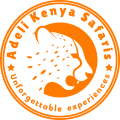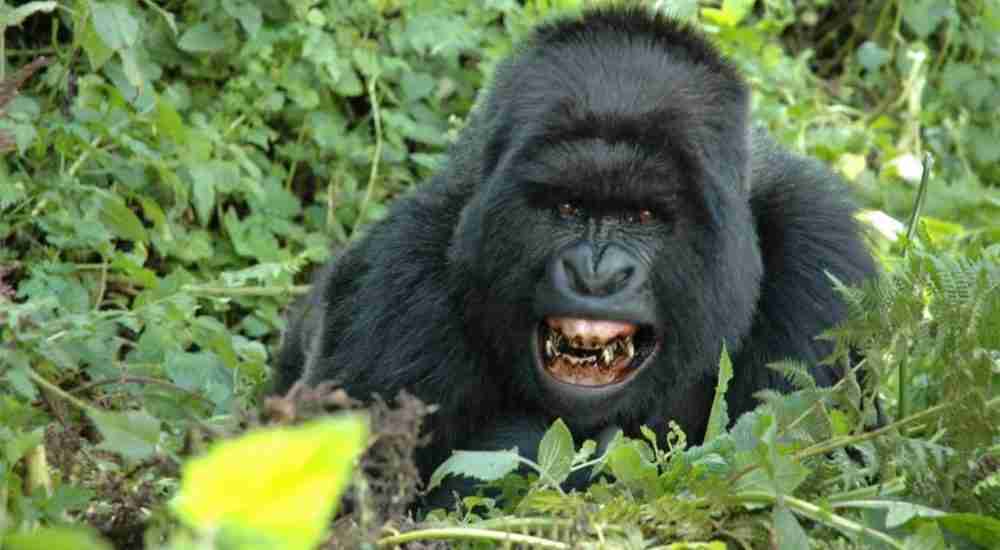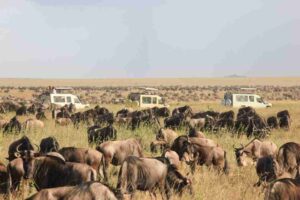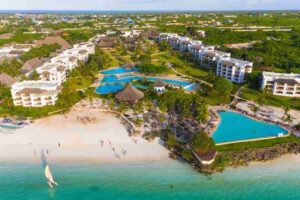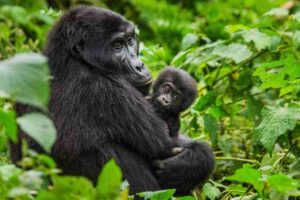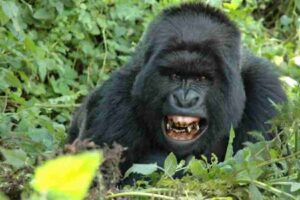The best time to go gorilla trekking in Rwanda is during the dry season between the months of December to March, and June to September. Not only will the terrain be easier to navigate, it will also be much easier to spot gorillas hidden within the bamboo forests. It is important to note, however, that though it may be the dry season, the weather in Rwanda is notoriously unpredictable so advise your clients to pack a raincoat and waterproof hiking gear.
Gorilla trekking in Rwanda is a once-in-a-lifetime experience that allows you to encounter endangered mountain gorillas in their natural habitat. Here’s what you need to know about gorilla trekking in Rwanda:
- Location: Rwanda is home to Volcanoes National Park, located in the Virunga Mountains in the northwest of the country. This park is one of the best places in the world for gorilla trekking.
- Permit: Gorilla trekking permits are required to visit the gorillas in Volcanoes National Park. Permits need to be obtained in advance through the Rwanda Development Board (RDB) or through a registered tour operator. It’s recommended to book permits well in advance as they are limited and often sell out quickly.
- Guided Treks: Gorilla trekking in Rwanda is conducted with experienced guides and trackers who lead groups of tourists through the forest to locate gorilla families. The guides provide information about gorilla behavior, conservation efforts, and ensure the safety of visitors and gorillas.
- Habituated Gorilla Groups: The gorilla families in Volcanoes National Park are habituated to the presence of humans, allowing for close encounters during treks. Each trekking group is assigned to visit one of the habituated gorilla families for a designated amount of time.
- Fitness Level: Gorilla trekking can be physically demanding, involving hiking through dense forest and steep terrain at high altitudes. It’s essential to be in good physical condition and prepared for challenging conditions.
- Packing List: Essential items to bring for gorilla trekking include sturdy hiking boots, long pants, long-sleeved shirts, a rain jacket, sunscreen, insect repellent, and plenty of water. A porter can be hired to carry personal belongings and assist during the trek.
- Rules and Regulations: There are strict rules and regulations in place to protect the gorillas and their habitat. Visitors must maintain a distance of at least 7 meters from the gorillas, avoid eating or drinking near the gorillas, and follow the instructions of the guides at all times.
- Conservation Efforts: Gorilla trekking permits contribute to conservation efforts and community development in Rwanda. A portion of the permit fees is allocated to support gorilla conservation, anti-poaching efforts, and community projects in the surrounding areas.
- Photography: Photography is allowed during gorilla trekking, but flashes are not permitted as they can disturb the gorillas. It’s recommended to bring a camera with a zoom lens to capture clear photos without disturbing the animals.
- Responsible Tourism: Responsible tourism practices, such as minimizing environmental impact, respecting wildlife and local communities, and supporting conservation initiatives, are essential for sustainable gorilla tourism in Rwanda.
In Rwanda, gorilla trekking primarily takes place in Volcanoes National Park, also known as Parc National des Volcans. This park is located in the northwest of the country and is part of the Virunga Massif, a chain of volcanic mountains that stretches across Rwanda, Uganda, and the Democratic Republic of Congo.
Volcanoes National Park is home to several habituated mountain gorilla groups, making it one of the best places in the world for gorilla trekking. The park’s dense bamboo forests and lush vegetation provide a natural habitat for these endangered primates.
While Volcanoes National Park is the main destination for gorilla trekking in Rwanda, there are other national parks and protected areas in the country that offer wildlife viewing opportunities and outdoor activities. These include:
- Akagera National Park: Located in the east of Rwanda, Akagera National Park is known for its diverse wildlife, including elephants, lions, giraffes, zebras, and antelopes. Visitors can enjoy game drives, boat safaris, and birdwatching in this scenic park.
- Nyungwe Forest National Park: Situated in the southwest of Rwanda, Nyungwe Forest National Park is a biodiversity hotspot known for its dense tropical rainforest, diverse wildlife, and primate species, including chimpanzees and colobus monkeys. The park offers hiking trails, canopy walks, and birdwatching opportunities.
- Gishwati-Mukura National Park: This newly established national park is located in the northwest of Rwanda and is known for its montane rainforest, waterfalls, and diverse wildlife. Visitors can explore the park on guided nature walks and birdwatching tours.
While Volcanoes National Park remains the primary destination for gorilla trekking in Rwanda, these other national parks offer additional opportunities to experience the country’s rich biodiversity and natural beauty.
Gorilla trekking in Rwanda offers a unique opportunity to observe these magnificent creatures in their natural habitat while supporting conservation efforts and local communities. It’s an unforgettable experience that provides a deeper understanding of the importance of protecting endangered species and their habitats.
